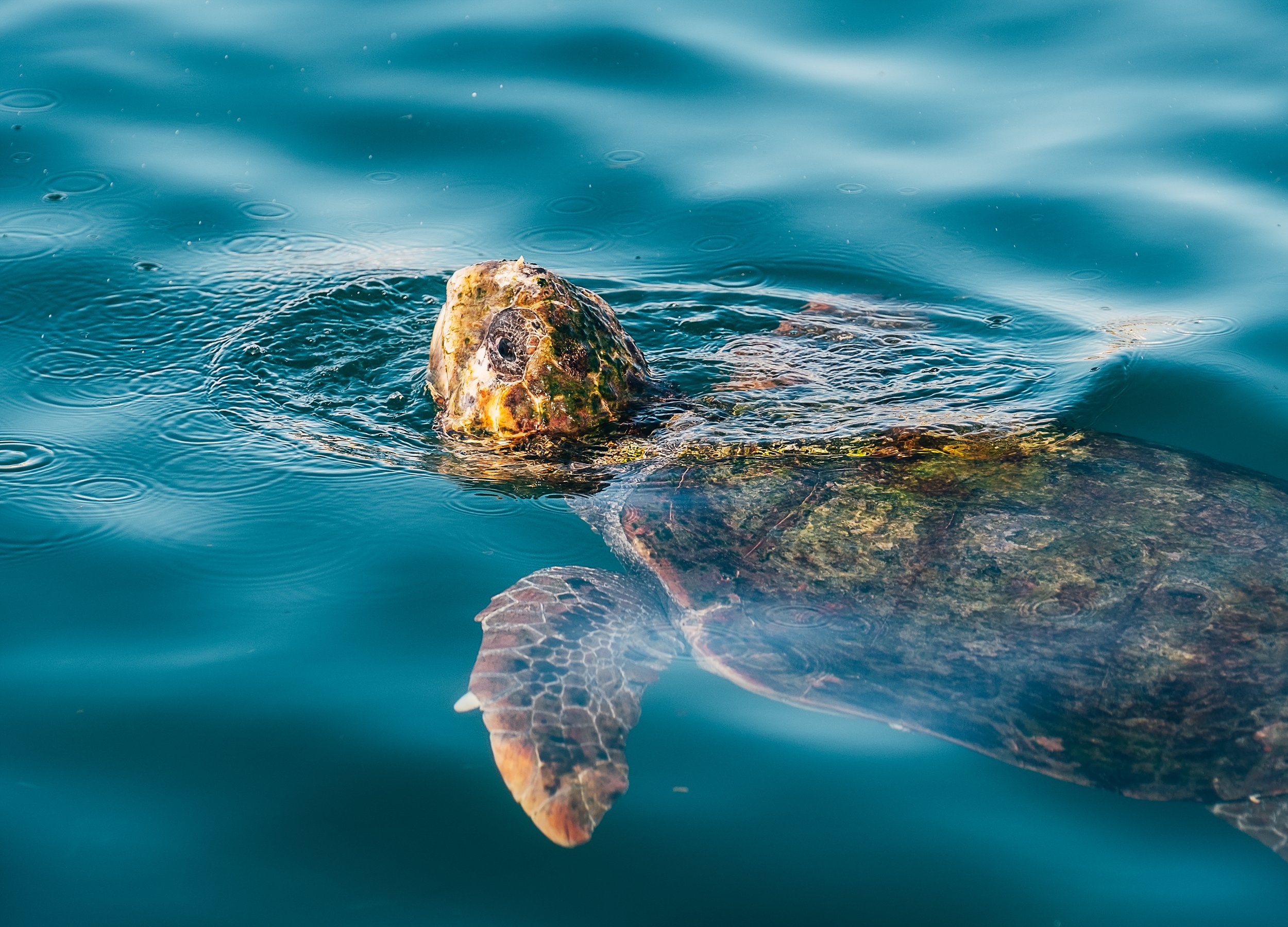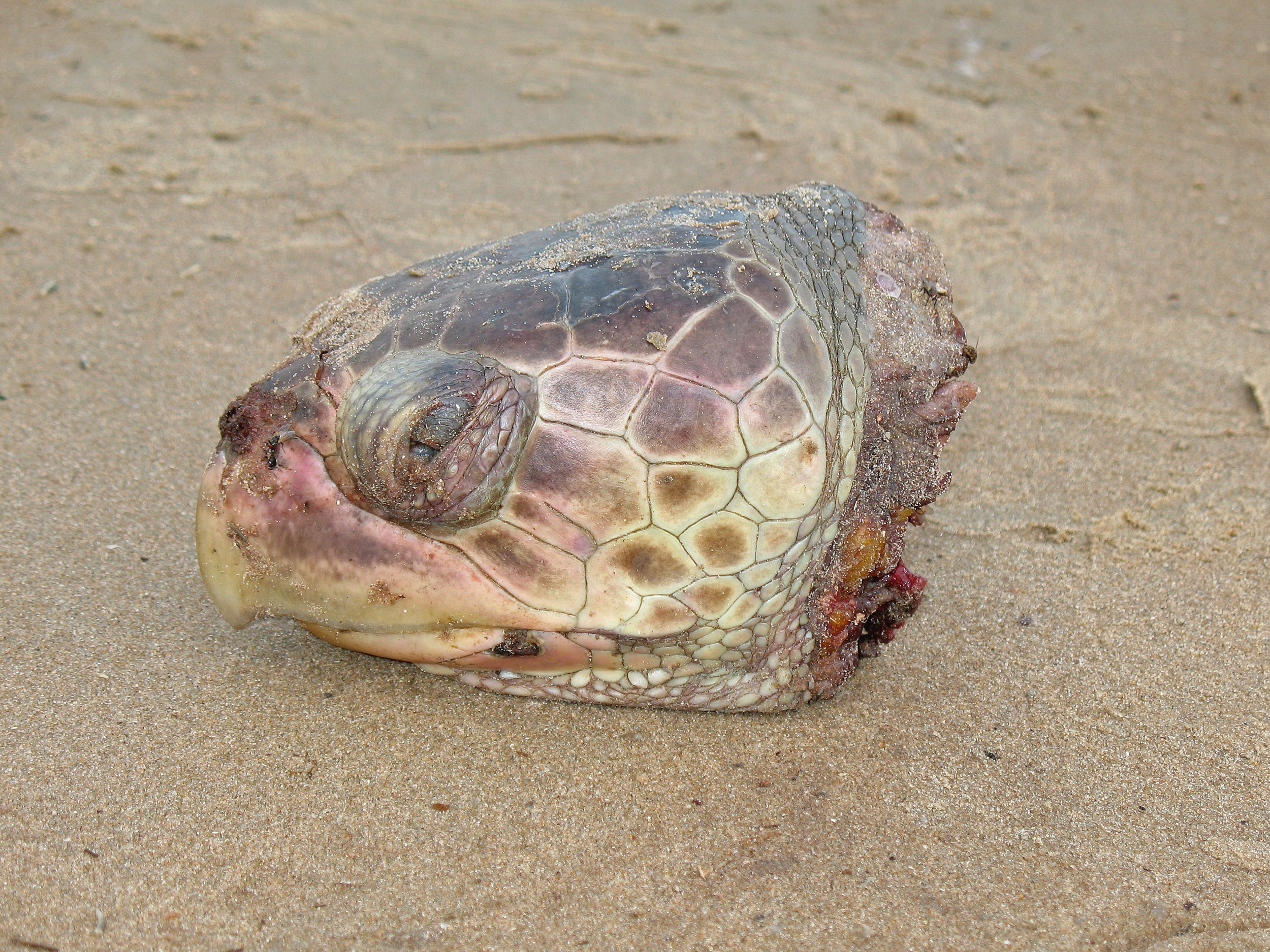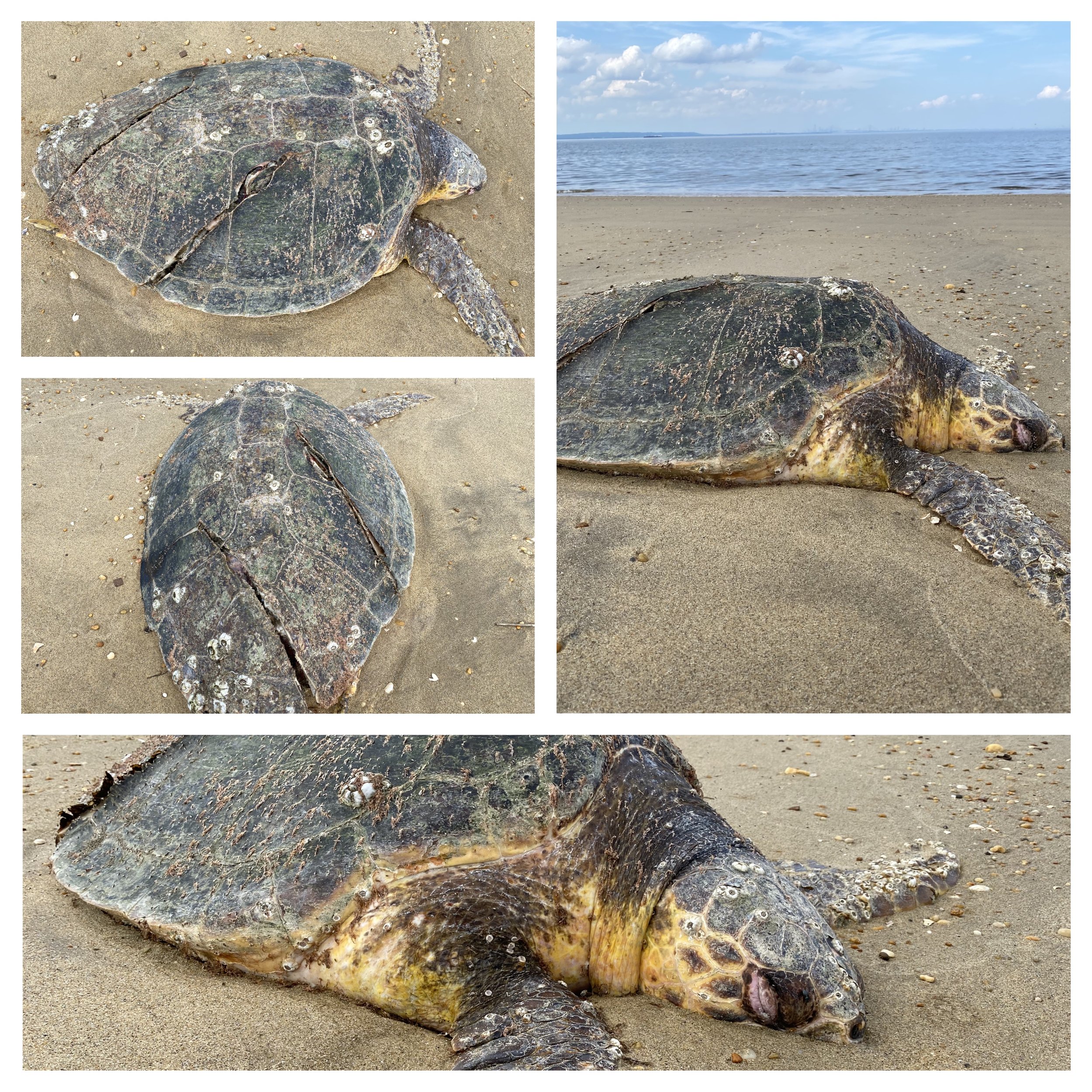Save Sea Turtles Along the Jersey Shore!
A juvenile loggerhead sea turtle found dead in 2012 along Sandy Hook Bay, NJ
Of The Seven Species Of Sea Turtles Found Around The World, Four (4) Species Are Commonly Seen In Northeast U.S. Waters, including along the Jersey Shore.
These Include The Green, Kemp's Ridley, Leatherback, And Loggerhead.
All Of Which Are Listed And Protected In The United States Under The Endangered Species Act.
Graphic from NOAA Fisheries/Galveston Laboratory
The seven existing species of sea turtles living around the world are: the 1.green, 2. loggerhead, 3. Kemp's ridley, 4. olive ridley, 5. hawksbill, 6. flatback, and 7. leatherback.
The flatback sea turtle is found solely on the northern coast of Australia.
In New Jersey, at least three sea turtle species are common during the warmer months of the year: Loggerhead, Kemp’s Ridley and the Leatherback.
Sea Turtles Really Do Call the Jersey Shore Home!
WHY ARE SEA TURTLES FOUND ALONG THE JERSEY SHORE?
A loggerhead sea turtle underwater then emerging above the water’s surface to catch a breath of fresh air
Sea turtles are not native to the Jersey Shore, but they are found in the Northeast (including New Jersey) during the warmer months (spring through fall) as they migrate to nutrient-rich waters for foraging of food. Sea turtles typically return to warmer waters as temperatures drop.
The Northeast, particularly areas like Cape Cod Bay, the Gulf of Maine, Long Island Sound, and the Jersey Shore offer abundant food sources for sea turtles, including crabs, jellyfish, and algae, making them attractive foraging grounds.
Several species of sea turtles, including loggerheads, Kemp's Ridleys, and leatherbacks, migrate from their nesting beaches in warmer regions of the Atlantic Ocean to these foraging grounds in the Northeast.
Sea turtles are typically found in the Northeast from about May through November, when water temperatures are warm enough.

Threats to Sea Turtles Along the Jersey Shore!
Sea turtles face numerous threats along the Jersey Shore while foraging, including plastic pollution, bycatch in fisheries, entanglement in marine debris, cold-stunning, and climate change, which can lead to habitat degradation.
A sea turtle with a bloody wound in the nose from a fishing hook.
It’s estimated that only 1% of sea turtles survive to sexual maturity at the age of 30 to 50 years, depending on the species. Threats to both juvenile and adult sea turtles along the Jersey Shore include:
Pollution:
Plastic Pollution
Sea turtles can ingest plastic debris, mistaking it for food, or become entangled in plastic waste, causing injury or death.
Plastic Bags
Sea turtles can mistake plastic debris, especially plastic bags, for jellyfish, leading to ingestion and potential blockages in their digestive systems, causing malnutrition and death. Some sources estimate that over 50% of sea turtles have ingested plastic, and a single piece of plastic can increase their risk of death by 20%. Imagine what ingesting five pieces of plastic can do!
Oil Spills:
Oil spills can contaminate nesting and foraging habitats, harming sea turtles and their eggs.
Chemical Pollution
Industrial and agricultural runoff can pollute the water, leading to the accumulation of toxins in sea turtles, causing illness and death.
Bycatch in Fisheries:
Accidental Capture
Sea turtles can become entangled in fishing gear (nets, hooks, etc.) and drown or suffer injuries.
Commercial Fishing
The global demand for seafood and unsustainable fishing practices put sea turtles at risk of being caught as bycatch.
Direct Harvest and Poaching:
Poaching
Sea turtles are hunted for their meat, shells, and skin, leading to their decline.
Cold-Stunning
As temperatures drop in the fall, sea turtles begin their migration south, but some may become "cold-stunned" if they remain in the area too long and are exposed to cold water (below 50 degrees F).
Climate Change:
Rising Sea Levels
Climate change causes sea levels to rise, eroding submerging habitats.
Extreme Weather Events
Stronger storms and hurricanes can disrupt sea turtle behavior.
Vessel Strikes:
Sea turtles can be struck by boats, causing injury or death.
Entanglement in Marine Debris:
Sea turtles can become entangled in discarded fishing gear, plastic, and other debris, leading to injury or death.
Sea turtle body parts, including their shells, meat, and eggs, have been historically and continue to be valuable in some cultures, leading to the illegal trade of body parts in the United States, which poses a significant threat to sea turtle populations. This is the remains of a loggerhead sea turtle.
Ship Strikes to Sea Turtles
According to NOAA Fisheries, it is estimated that hundreds to thousands of sea turtles are struck by vessels in the United States every year, and many of them are killed. Vessel strikes are one of the most common causes of sea turtles stranding in the United States.
Ship strikes pose a significant threat to sea turtles, causing injuries and mortality, especially when turtles surface to breathe or are in shallow areas, and can lead to injuries like propeller wounds and "bubble butt syndrome,” which can occur when a sea turtle is struck by a boat's hull, forcing air into its body cavity, preventing buoyancy control and the ability to dive and hunt.
Sea turtles are particularly vulnerable to vessel strikes when they surface to breathe or feed from:
Propeller Strikes: These can cause deep cuts and wounds, potentially leading to severe injuries or death.
Hull Strikes: Blunt trauma from the hull of a boat can cause bruising, broken bones, or even death.
Vessel strikes are a major cause of sea turtle mortality, especially in areas with heavy boat traffic including the Jersey Shore that is between two heavy shipping traffic area in New York and Philadelphia.
In summer 2021, a sub-adult male loggerhead sea turtle (Caretta caretta) washed up dead on a beach in Keansburg, NJ, located along Raritan Bay. The turtle’s carapace had obvious signs and cuts that it had been injured from colliding with a boat.
The northwest Atlantic Ocean population of Loggerhead sea turtles are considered threatened in the United States of America and is listed under the Endangered Species Act.
Kemp’s ridley turtles are the smallest marine turtle in the world. The species is named after Richard M. Kemp, a fisherman from Key West, Florida, who first submitted the species for identification in 1906.
The Kemp’s ridley turtle is the rarest and most endangered of the sea turtles species. The Kemp's ridley turtle is found solely in the Gulf of Mexico and along the East Coast of the United States. Kemp’s ridleys were once abundant in the waters of the North Atlantic and Gulf of Mexico. According to the U.S. Fish and Wildife service: “Its numbers precipitously declined after 1947, when over 40,000 nesting females were estimated in a single beach in Mexico. The nesting population produced a low of 702 nests in 1985; however, since the mid-1980s, the number of nests laid in a season has been increasing primarily due to nest protection efforts and implementation of regulations requiring the use of turtle excluder devices in commercial fishing trawls. The decline of this species is primarily due to human activities, including the direct harvest of adults and eggs and incidental capture in commercial fishing operations. Today, under strict protection, we are cautiously optimistic that the population is on its way to recovery.”
Most Kemp’s widely nest near Rancho Nuevo, Mexico. But adults and juveniles will wander northward along the Atlantic coast of North America as far north as Nova Scotia and Newfoundland during the non breeding season to forage on crabs, small fish, seaweed, and to also scavenge on dead fish and discarded bycatch.
Spotlight on Kemp’s Ridley Sea Turtle
A Kemps Ridley Sea Turtle found dead in Port Monmouth, NJ in 2010. Kemp's ridley sea turtles, also called the Atlantic ridley sea turtle, is the rarest species of sea turtle and is critically endangered.
Five Things You Can Do To Save Sea Turtles Along the Jersey Shore!
To help save sea turtles along the Jersey Shore you can reduce plastic use, keep beaches clean, choose sustainable seafood, minimize boat strikes, and support conservation efforts.
Here are 5 concrete ways you can help sea turtles:
Reduce Plastic Use and Dispose of Waste Properly:
Sea turtles often mistake plastic debris for food or become entangled in it. Reduce your plastic consumption by using reusable bags, water bottles, and straws, and ensure proper disposal of any plastic waste.
Keep Beaches Clean:
Whatever trash is on the beach will eventually get washed into the water to cause sea turtles to inject plastic debris. Sharp plastics can rupture internal organs and bags can cause intestinal blockages leaving turtles unable to feed, resulting in starvation.
Choose Sustainable Seafood:
Some fishing practices can lead to the accidental capture (bycatch) of sea turtles. Avoid seafood, especially species of fish that can contribute to sea turtle bycatch. If you wish a fishy meal it is better to order locally raised shellfish, such as clams, oysters or mussels.
Be Mindful When Boating or Fishing:
Sea turtles can be injured or killed by boat strikes and fishing gear. When boating, slow down and steer clear of sea turtles, and be careful when fishing to avoid entanglement.
Support Sea Turtle Conservation:
Donate to or volunteer with organizations dedicated to sea turtle conservation. You can also educate others about the importance of sea turtle protection and encourage them to take action. Locally, you can support Sea Turtle Recovery, located at Essex County Turtle Back Zoo. They are a nonprofit whose mission includes rehabilitating sick and injured sea turtles for their release back into the wild.








